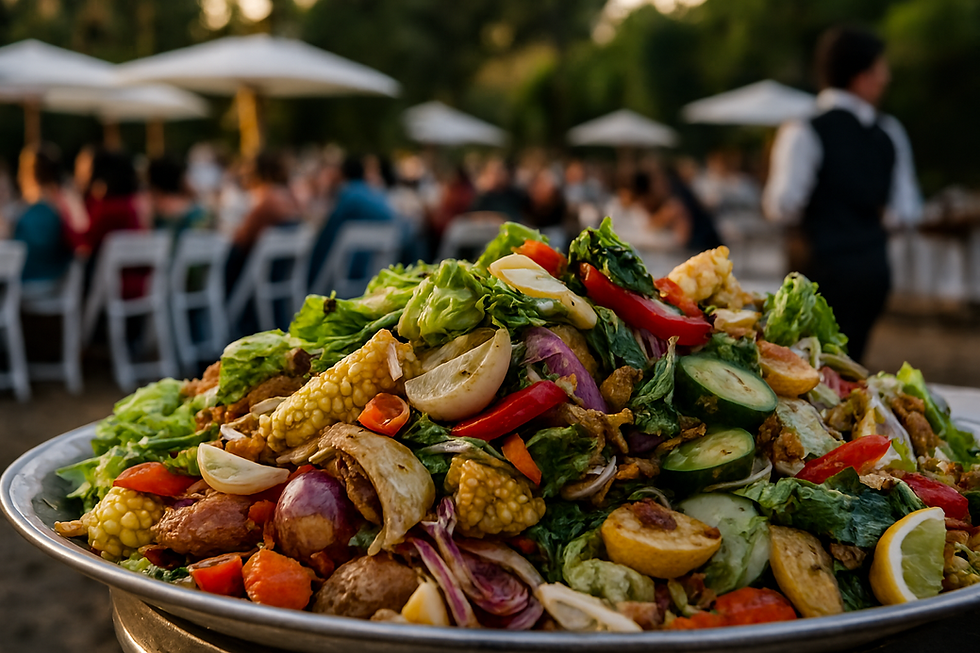Sustainable Event Marketing: How to Promote Your Green Event
- Avion W. Anderson
- Aug 9
- 2 min read
Planning a green event is more than just reducing waste or choosing an eco-friendly venue—it’s also about sharing your sustainability story in a way that inspires others to take action.
Marketing a sustainable event requires a thoughtful approach that aligns with your values while still reaching the right audience.

Here’s how you can promote your green event without compromising your environmental principles.
1.) - Start with Your Sustainability Story
People connect with stories, not just details. Communicate:
- Why is your event sustainable (e.g., zero-waste goals, plant-based catering, carbon offset initiatives).
- The impact your event will have (e.g., local community benefits, environmental contributions).
- How attendees can play a role in your green mission.
Example: Instead of “Annual Wedding Fair,” say “Eco Wedding Showcase: Where Love Meets Sustainability” and share how each vendor contributes to eco-friendly celebrations.
2.) - Go Digital with Your Promotions
Printing thousands of flyers can undermine your sustainability message. Opt for:
- Social media campaigns with engaging visuals and videos.
- Event websites or landing pages with all key details in one place.
- Email marketing with digital invites, updates, and thank-you notes.
- QR codes on minimal printed materials, linking to full event info.
Tip: Use a green-powered hosting service to make your online presence eco-conscious.
3.) - Partner with Like-Minded Brands and Influencers
Collaborating with eco-conscious vendors, local artisans, and green influencers can amplify your reach. Look for:
- Sustainable businesses that can co-promote the event.
- Influencers who specialize in eco-living, travel, or lifestyle content.
- Local environmental groups who can share your event with their audience.
This builds credibility while expanding your network.
4.) - Engage Your Community Before the Event
Sustainable marketing is about participation, not just promotion. You can:
- Host mini online challenges (e.g., “Share your best upcycled event outfit”).
- Feature behind-the-scenes stories of your sustainable preparations.
- Run polls or Q&A sessions on Instagram or Facebook about eco-friendly choices.
The more involved people feel beforehand, the more likely they are to attend and share.
5.) - Use Low-Impact Physical Marketing
If you do use printed materials, make them planet-friendly:
- Recycled paper with eco-friendly inks.
- Small batch printing.
- Multi-purpose designs (e.g., event posters that double as art prints).
You can also create reusable signage that can be repurposed for future events.
6.) - Share the Impact After the Event
Post-event marketing is just as important for building long-term trust. Share:
- Photos and videos capturing the event’s sustainable elements.
- Statistics (e.g., waste diverted from landfill, local suppliers supported).
- Attendee feedback on your green initiatives.
This transparency shows that your sustainability claims are more than just marketing.
✅ Final Tip: Promote with authenticity. Greenwashing can quickly damage credibility. Be honest about your efforts, even if you’re still improving.

Inspiring Example:
Imagine a Tobago-based Eco Wedding & Event Fair that’s promoted entirely online, partners with local sustainable vendors, and showcases traditional culture alongside modern green solutions.
By sharing behind-the-scenes prep, collaborating with eco influencers, and publishing post-event impact stats, it not only attracts attendees but also positions Tobago as a sustainable event destination.



Comments